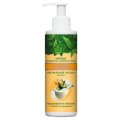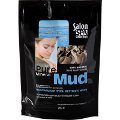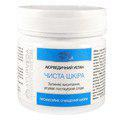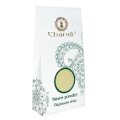 Although most people associate the term “acne” with pimples on the face, this skin condition can affect skin in other areas of the body, such as the upper part of the chest and back. Even though acne on the back isn’t as obvious as facial acne, it can be just as uncomfortable. Let’s figure out how to get rid of back acne and prevent its recurrence.
Although most people associate the term “acne” with pimples on the face, this skin condition can affect skin in other areas of the body, such as the upper part of the chest and back. Even though acne on the back isn’t as obvious as facial acne, it can be just as uncomfortable. Let’s figure out how to get rid of back acne and prevent its recurrence.
Back acne, also referred to as bacne, occurs when dead skin cells and excess sebum (skin oil) clog hair follicles on the back, resulting in blackheads, whiteheads, and/or pimples. It typically occurs due to excess sebum secretion, wearing unbreathable clothes, lack of proper skincare (cleansing, exfoliation and moisturising), and using comedogenic skincare products.
In addition, there are internal factors responsible for bacne, as well as facial acne. They include hormonal imbalance, genetic predisposition, and liability to allergic reactions. There is also evidence, albeit weak, showing that diet may play a role, too. Greasy, sweet, salty, spicy, and smoked foods are believed to increase bacne severity.
Despite the fact that bacne is usually hidden by the clothes and no one can see it, you shouldn’t just ignore the problem. If you do nothing, pimples can get inflamed and become painful. Besides, untreated bacne may result in scars that are very hard to get rid of. So let’s figure out how to take care of the skin of your back if you have bacne and how to get rid of it.
Pay Special Attention to Hygiene
Less than thorough personal hygiene, especially during hot weather or after working out, can contribute to the development of bacne. So don’t forget to wash your back well during showering or taking a bath. However, if you already have inflamed, painful bacne, you shouldn’t use a hard loofah sponge or body scrubs because it will only make things worse. Let your back heal before exfoliating.
Stop Wearing Unbreathable Synthetic Clothes
To be fair, not all synthetic materials are unbreathable; most activewear, for example, features synthetic materials that allow the skin to breathe. We’re talking about cheap synthetic textiles that block air access to the skin and create a greenhouse effect, causing excessive sweating. Sweat mixed with skin oil clogs pores and creates the perfect environment for the growth of pathogenic microbes that cause bacne and inflammation.
Avoid Comedogenic Skincare Products
The term “comedogenic” refers to cosmetic products that can clog pores and cause blackheads, whiteheads, and pimples. They are typically formulated with silicones, mineral oils, and heavy carrier oils. If you’re prone to bacne, you should steer clear of skincare products with comedogenic ingredients because they will exacerbate the condition and render useless all your efforts to get rid of bacne.
Take Proper Care of the Skin of Your Back
Since no one can see the back under the clothes, a lot people forget to pay enough attention to taking care of this part of the body. But the thing is, the skin here needs proper cleansing, hydration and nourishment, just like the skin on the rest of the body. And, of course, it is very important to choose the right skincare products.
If you have bacne, you should opt for mild shower gels without harsh surfactants, fragrances, synthetic preservatives, and silicones. Choose products formulated with plant-based surfactants that cleanse the skin very gently and don’t cause irritation or dehydration, since dehydrated skin starts producing even more skin oil to compensate for the lack of moisture, which results in bacne.
To moisturise and nourish the skin, use a lightweight body lotion, cream or mousse formulated with natural ingredients, such as plant extracts and essential oils. Most body moisturisers contain carrier oils, so you need to make sure that the product you’re planning to use is formulated with low-comedogenic ones. For example, coconut oil and cocoa butter are considered highly comedogenic, whereas argan oil, shea butter, and mango seed butter are categorised as low-comedogenic.
To normalise sebum secretion and inhibit the growth of pathogenic bacteria, try clay masks. They can contain different types of cosmetic clay, such as kaolin, bentonite, or fuller’s earth (multani mitti). In addition to clay, such masks usually contain essential oils and plant extracts with antiseptic, antibacterial, and anti-inflammatory properties, such as sage extract, chamomile extract, calendula extract, green tea extract, tea tree oil, eucalyptus oil, lavender oil, rosemary oil, peppermint oil, and various citrus oils.
If bacne is localised, you can apply a topical treatment with salicylic acid or retinoids. However, it is best to consult a dermatologist or beautician before using products with a high concentration of active ingredients.
Anti-Acne Products in Our Store
Comex Moisturising & Nourishing Natural Body Lotion, 250 ml |
Salon Salon Spa Collection. Natural Dead Sea Mud, 200 g |
Triuga Clean Skin Ubtan, 90 g |
Chandi Neem Powder, 100 g |
